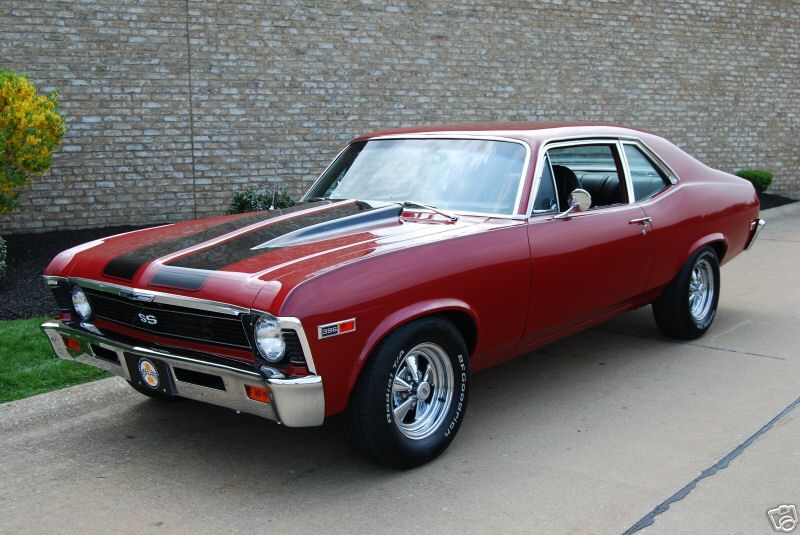mmcartalk
Expert
- Messages
- 4,159
- Reactions
- 2,675
MM Retro-Write-Up: 1969-1970 Dodge Dart Swinger 340
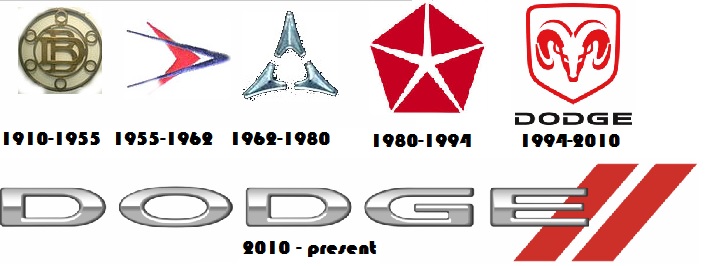
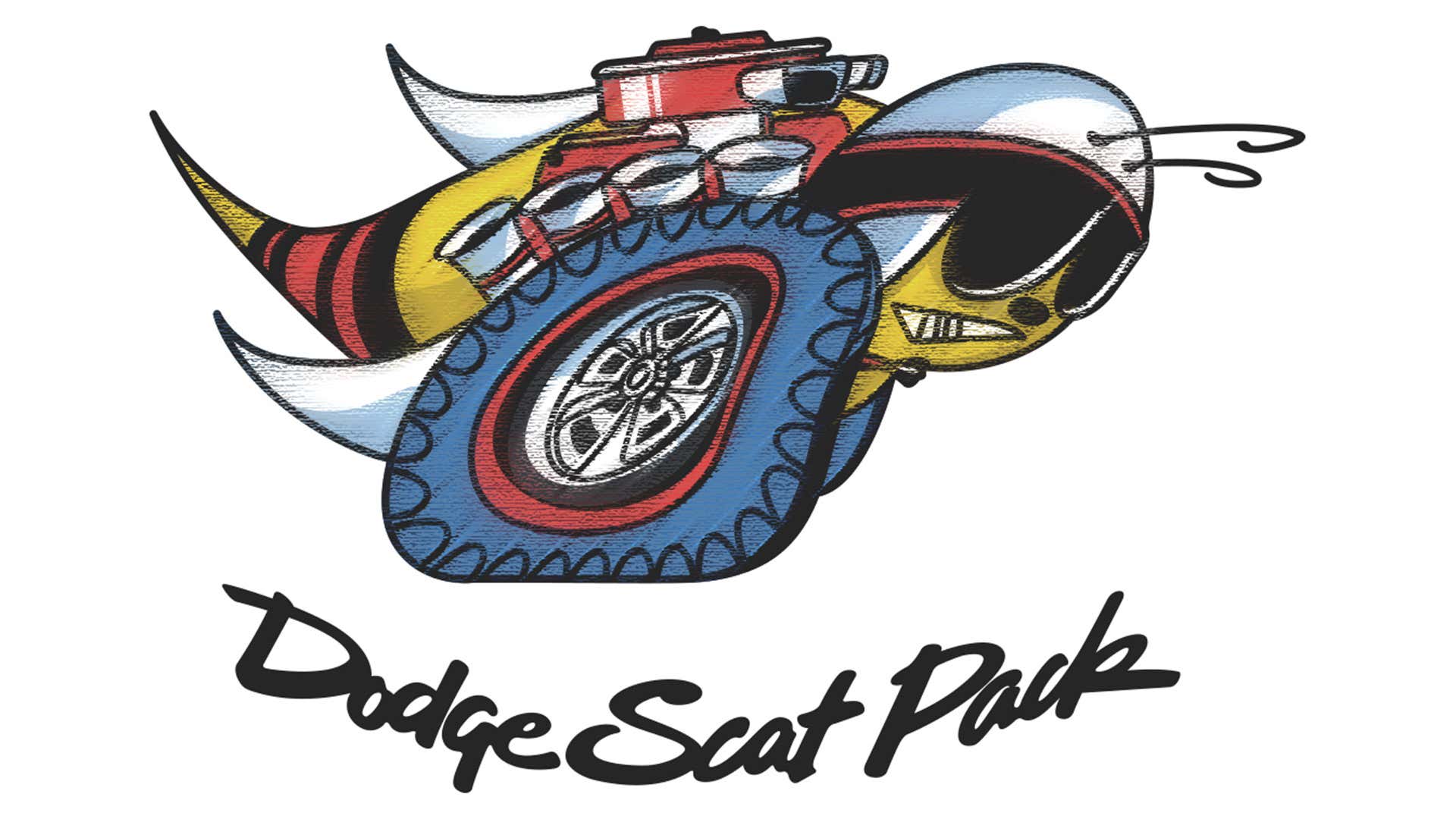

(1969)

(1970)

(1970)
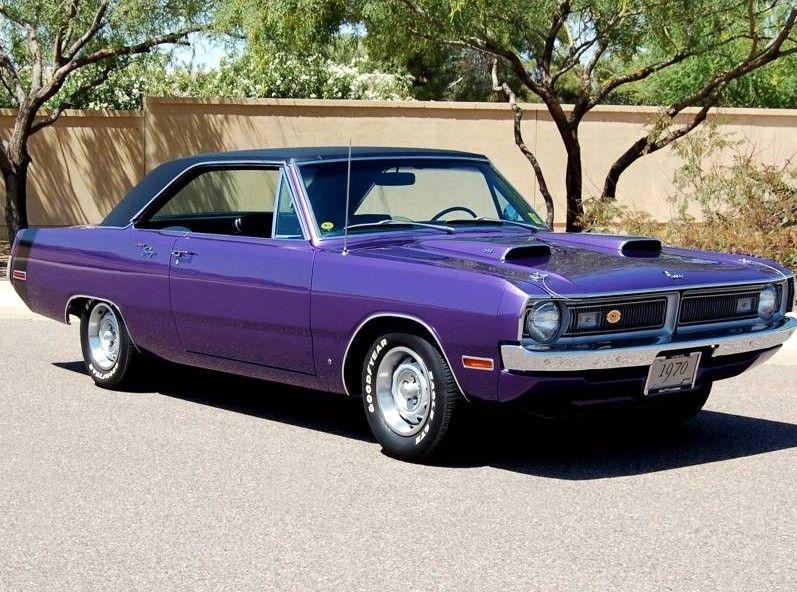
(1970)

(1969)
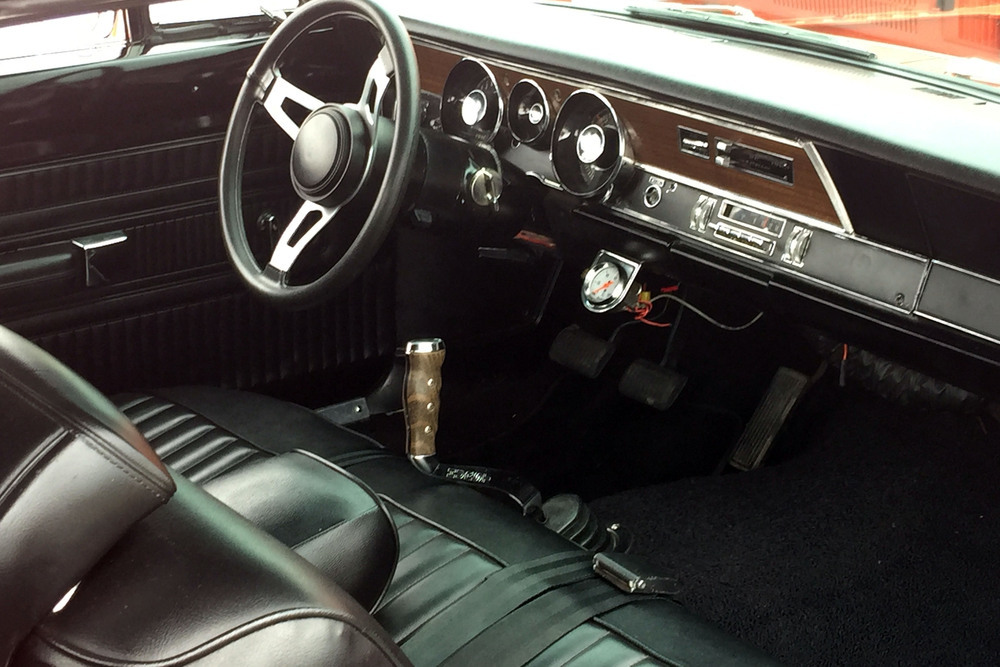
(1970)
The Dodge Dart line was first unveiled in 1960 as a version of the full-sized Dodge coupe/sedan/wagon platform, which competed with lower-line trim versions of the full-sized Mercury and Pontiac, leaving the corporate-brother Plymouths to compete with the full-size Fords and Chevys. The Dart survived the disastrous downsizing of the 1962 full-sized Dodges and Plymouths……a mistake that was almost as bad as Ford’s Edsel in its execution. For 1963, with the redesign of the Plymouth/Dodge compact (A-Body) line, Dodge marketers decided to transfer the Dart name to what had formerly been the Lancer, and rename it the Dart….which would sell alongside Plymouth’s compact Valiant (the car I first learned to drive on). As a teen-ager, I had MANY hours behind the wheel and MANY miles in Valiants, both column-stick-shift and automatic, all over the Eastern U.S…..particularly throughout the Piedmont/Central Appalachian Mountains and to Ohio, but it will save that for another write-up. For this write-up, I will concentrate on the Valiant’s sister-car, the Dart, which remained Dodge’s mainstream compact, alongside the Valiant, until 1976, when the ill-fated Plymouth Volare and Dodge Aspen took their places. The Volare and Aspen were defect-riddled and poorly-built, but that is also another story (see my earlier write-up on my Late mother’s 1977 Volare).
In the 1960s, however, particularly the mid-60s, the Dart and Valiant got an almost bulletproof reputation, despite some noted weaknesses in paint-finish, spit-back gas filler-pipes, second-rate body hardware, road/engine-noise, and the Push-and-Pray non-power drum brakes on 13-inch wheels that faded much too quickly and weren’t really up to the task….I learned how to drive very carefully in the mountains. But the durable Slant-Six engines/Torqueflite automatic transmissions (they were popular in non-Checker taxicabs for a reason), fully-unitized body which resisted rattles/squeaks better than body-on-frame cars, and the torsion-bar front/leaf-rear suspension, which sacrificed some softness and comfort for noticeably better handling than competitors, were all features which helped sell these cars in good numbers and establish their reputation.
In the late 1960s, quality control on these cars, as with most of the rest of Chrysler’s American lineup, started downhill again after several excellent years earlier in the decade, though not quite to the disastrous levels of 1957-58, which turned a lot of people off to the Corporation’s products. The Corporation had also adopted a then-unheard-of 5-year/50,000 mile warranty on the drivetrains, which reflected the basic durability of their engines and automatic transmissions…competitors had one or two years at most. By 1970, multiple assembly-defects were common in each new Chrysler product that came off the line.
But, at the same time, in 1969, a interesting new version of the Dart was added….the two-door high-performance Swinger 340, which used the new 340 cubic inch (5.6L) bored-out version of the more pedestrian but no slouch) 318 cubic-inch (5.2L) V8., which had replaced the smaller two and four-barrel 273-cubic-inch V8s of the mid-60s. Transmissions were a 3 or 4-speed manual (column or floor-shift on the 3-speed) and the durable 3-speed Torqueflite automatic.
The Swinger 340 was a big success, and scored big as a relatively cheap but effective no-friils muscle-car in a time when the American muscle-car-craze (and production) was at its peak. It bought a lot of muscle for not a lot of money, and was a decently reliable car, once the dealerships had repaired the endless number of assembly-goofs in them that came out of the factory. Dodge built a few Darts with the big 383 (6.3L) V8 stuffed under the hood (which competed with Chevy’s Nova SS396), and even fewer with the monster 426 (7.0L) Hemi, which was no-warranty and strictly for drag-racing, but those big iron-blocks were simply too large and bulky for the chassis, and impractical for most street use. The 340 was perfect for most people as a daily-driver, and competed very well with Ford and GM small-block V8s….better than a number of them. The torsion-bar/leaf suspension gave noticeably better cornering than most Ford/GM products (except for maybe the Corvette), and, by then, power-disc-front brakes (which Ford had used for several years on V8 products) were finally making their way into GM and Chrysler products, particularly in muscle-cars. The first 1969 Dart Swingers were done on the same A-body-shell as the 1968s, but the Dart/Valiant line-up was redesigned in 1970, and the new bodies and interiors were somewhat different.
Darts (and Dart Swingers) could, of course, be ordered in a wide variety of colors (back then, the manufacturers actually HAD a variety LOL)…my personal favorites were the extra-cost Tor-Lime-Green and purple/Violet Plum Crazy, though the classic Dodge high-performance “Scat-Pack” and “Super Bee” color-combo was yellow with black Bumble-Bee stripes in the rear. Many Swingers, particularly with the 340 engine, were sold that way. A two-door coupe-version, the (Dart) Demon was introduced for 1970, along with Plymouth’s twin Duster (I owned a later-model Duster as my first new car)…both offered the 340 engine, and the Duster 340 also became quite popular as a cheap performance car, more so than the Dodge Demon version. The Valiant itself, for some reason, never got a 340 version, sticking with the 318 as its top-engine, which, as I said earlier, was itself no slouch. Chrysler’s marketers, from what I remember, never publically gave a reason for that, except perhaps that Plymouth’s mid-sized Road Runner, along with the Duster 340, were selling in such large numbers (at a good price), taking most of that brand’s performance market, and the more pedestrian Valiant had never been associated in the public’s mind with performance.
The Swinger 340 models lasted into the early 70s, but, along with most other engines of that period, lost power and drivability with the new emission controls, and, with gas skyrocketing in price in late 1973/74 and long gas lines, interest in performance cars basically dried up. And, even with their durable engines/automatic transmissions, Chrysler’s continuing level of defects in their factory-assembly was starting to drive customers to Ford and GM products….and, of course, to the increasing numbers of Toyota and Honda dealerships that were just starting to pop up in the American market.
And, as Always, Happy Car-Memories.

MM
__________________




(1969)

(1970)

(1970)

(1970)
(1969)

(1970)
The Dodge Dart line was first unveiled in 1960 as a version of the full-sized Dodge coupe/sedan/wagon platform, which competed with lower-line trim versions of the full-sized Mercury and Pontiac, leaving the corporate-brother Plymouths to compete with the full-size Fords and Chevys. The Dart survived the disastrous downsizing of the 1962 full-sized Dodges and Plymouths……a mistake that was almost as bad as Ford’s Edsel in its execution. For 1963, with the redesign of the Plymouth/Dodge compact (A-Body) line, Dodge marketers decided to transfer the Dart name to what had formerly been the Lancer, and rename it the Dart….which would sell alongside Plymouth’s compact Valiant (the car I first learned to drive on). As a teen-ager, I had MANY hours behind the wheel and MANY miles in Valiants, both column-stick-shift and automatic, all over the Eastern U.S…..particularly throughout the Piedmont/Central Appalachian Mountains and to Ohio, but it will save that for another write-up. For this write-up, I will concentrate on the Valiant’s sister-car, the Dart, which remained Dodge’s mainstream compact, alongside the Valiant, until 1976, when the ill-fated Plymouth Volare and Dodge Aspen took their places. The Volare and Aspen were defect-riddled and poorly-built, but that is also another story (see my earlier write-up on my Late mother’s 1977 Volare).
In the 1960s, however, particularly the mid-60s, the Dart and Valiant got an almost bulletproof reputation, despite some noted weaknesses in paint-finish, spit-back gas filler-pipes, second-rate body hardware, road/engine-noise, and the Push-and-Pray non-power drum brakes on 13-inch wheels that faded much too quickly and weren’t really up to the task….I learned how to drive very carefully in the mountains. But the durable Slant-Six engines/Torqueflite automatic transmissions (they were popular in non-Checker taxicabs for a reason), fully-unitized body which resisted rattles/squeaks better than body-on-frame cars, and the torsion-bar front/leaf-rear suspension, which sacrificed some softness and comfort for noticeably better handling than competitors, were all features which helped sell these cars in good numbers and establish their reputation.
In the late 1960s, quality control on these cars, as with most of the rest of Chrysler’s American lineup, started downhill again after several excellent years earlier in the decade, though not quite to the disastrous levels of 1957-58, which turned a lot of people off to the Corporation’s products. The Corporation had also adopted a then-unheard-of 5-year/50,000 mile warranty on the drivetrains, which reflected the basic durability of their engines and automatic transmissions…competitors had one or two years at most. By 1970, multiple assembly-defects were common in each new Chrysler product that came off the line.
But, at the same time, in 1969, a interesting new version of the Dart was added….the two-door high-performance Swinger 340, which used the new 340 cubic inch (5.6L) bored-out version of the more pedestrian but no slouch) 318 cubic-inch (5.2L) V8., which had replaced the smaller two and four-barrel 273-cubic-inch V8s of the mid-60s. Transmissions were a 3 or 4-speed manual (column or floor-shift on the 3-speed) and the durable 3-speed Torqueflite automatic.
The Swinger 340 was a big success, and scored big as a relatively cheap but effective no-friils muscle-car in a time when the American muscle-car-craze (and production) was at its peak. It bought a lot of muscle for not a lot of money, and was a decently reliable car, once the dealerships had repaired the endless number of assembly-goofs in them that came out of the factory. Dodge built a few Darts with the big 383 (6.3L) V8 stuffed under the hood (which competed with Chevy’s Nova SS396), and even fewer with the monster 426 (7.0L) Hemi, which was no-warranty and strictly for drag-racing, but those big iron-blocks were simply too large and bulky for the chassis, and impractical for most street use. The 340 was perfect for most people as a daily-driver, and competed very well with Ford and GM small-block V8s….better than a number of them. The torsion-bar/leaf suspension gave noticeably better cornering than most Ford/GM products (except for maybe the Corvette), and, by then, power-disc-front brakes (which Ford had used for several years on V8 products) were finally making their way into GM and Chrysler products, particularly in muscle-cars. The first 1969 Dart Swingers were done on the same A-body-shell as the 1968s, but the Dart/Valiant line-up was redesigned in 1970, and the new bodies and interiors were somewhat different.
Darts (and Dart Swingers) could, of course, be ordered in a wide variety of colors (back then, the manufacturers actually HAD a variety LOL)…my personal favorites were the extra-cost Tor-Lime-Green and purple/Violet Plum Crazy, though the classic Dodge high-performance “Scat-Pack” and “Super Bee” color-combo was yellow with black Bumble-Bee stripes in the rear. Many Swingers, particularly with the 340 engine, were sold that way. A two-door coupe-version, the (Dart) Demon was introduced for 1970, along with Plymouth’s twin Duster (I owned a later-model Duster as my first new car)…both offered the 340 engine, and the Duster 340 also became quite popular as a cheap performance car, more so than the Dodge Demon version. The Valiant itself, for some reason, never got a 340 version, sticking with the 318 as its top-engine, which, as I said earlier, was itself no slouch. Chrysler’s marketers, from what I remember, never publically gave a reason for that, except perhaps that Plymouth’s mid-sized Road Runner, along with the Duster 340, were selling in such large numbers (at a good price), taking most of that brand’s performance market, and the more pedestrian Valiant had never been associated in the public’s mind with performance.
The Swinger 340 models lasted into the early 70s, but, along with most other engines of that period, lost power and drivability with the new emission controls, and, with gas skyrocketing in price in late 1973/74 and long gas lines, interest in performance cars basically dried up. And, even with their durable engines/automatic transmissions, Chrysler’s continuing level of defects in their factory-assembly was starting to drive customers to Ford and GM products….and, of course, to the increasing numbers of Toyota and Honda dealerships that were just starting to pop up in the American market.
And, as Always, Happy Car-Memories.

MM
__________________


